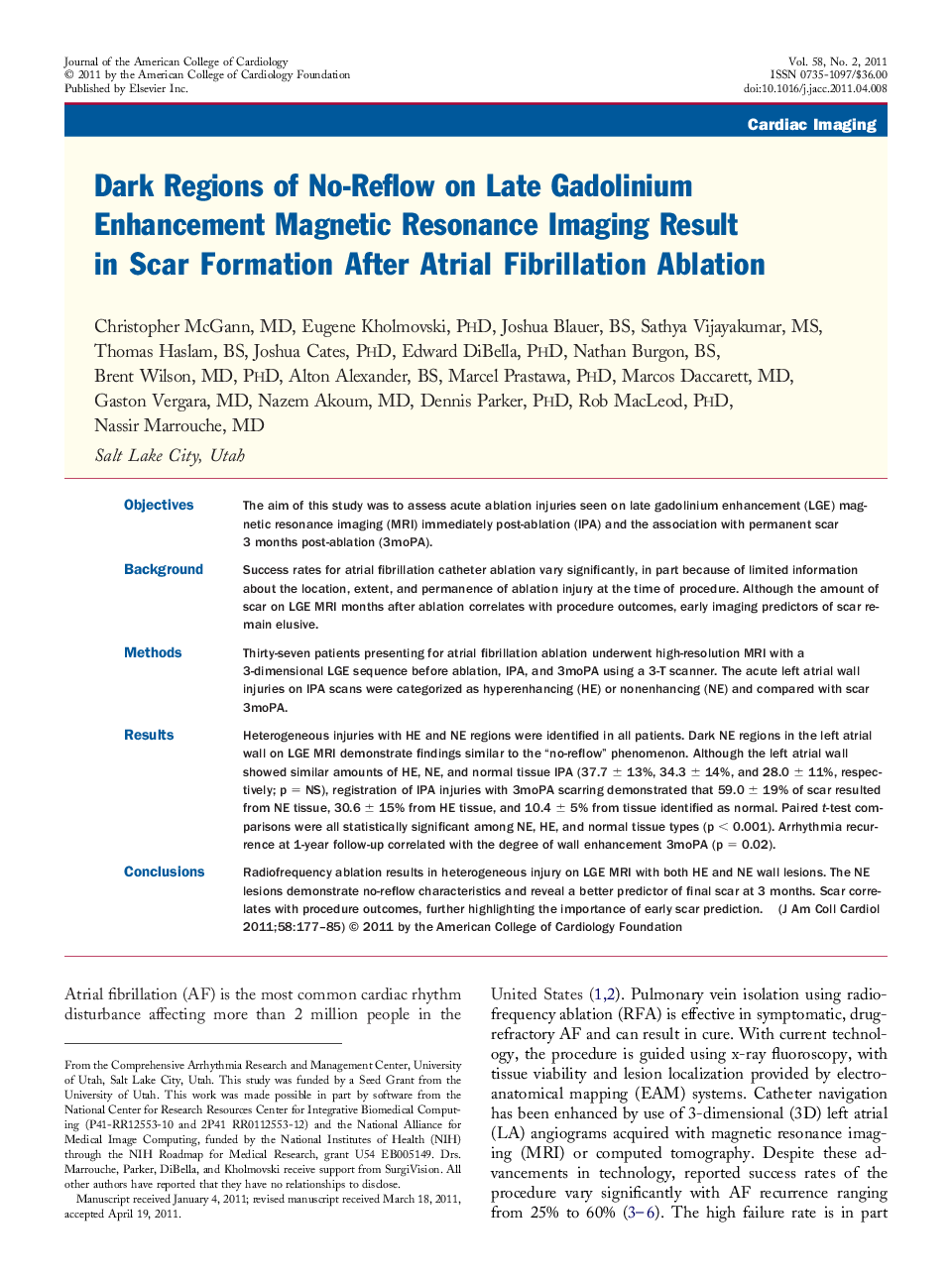| Article ID | Journal | Published Year | Pages | File Type |
|---|---|---|---|---|
| 2948127 | Journal of the American College of Cardiology | 2011 | 9 Pages |
ObjectivesThe aim of this study was to assess acute ablation injuries seen on late gadolinium enhancement (LGE) magnetic resonance imaging (MRI) immediately post-ablation (IPA) and the association with permanent scar 3 months post-ablation (3moPA).BackgroundSuccess rates for atrial fibrillation catheter ablation vary significantly, in part because of limited information about the location, extent, and permanence of ablation injury at the time of procedure. Although the amount of scar on LGE MRI months after ablation correlates with procedure outcomes, early imaging predictors of scar remain elusive.MethodsThirty-seven patients presenting for atrial fibrillation ablation underwent high-resolution MRI with a 3-dimensional LGE sequence before ablation, IPA, and 3moPA using a 3-T scanner. The acute left atrial wall injuries on IPA scans were categorized as hyperenhancing (HE) or nonenhancing (NE) and compared with scar 3moPA.ResultsHeterogeneous injuries with HE and NE regions were identified in all patients. Dark NE regions in the left atrial wall on LGE MRI demonstrate findings similar to the “no-reflow” phenomenon. Although the left atrial wall showed similar amounts of HE, NE, and normal tissue IPA (37.7 ± 13%, 34.3 ± 14%, and 28.0 ± 11%, respectively; p = NS), registration of IPA injuries with 3moPA scarring demonstrated that 59.0 ± 19% of scar resulted from NE tissue, 30.6 ± 15% from HE tissue, and 10.4 ± 5% from tissue identified as normal. Paired t-test comparisons were all statistically significant among NE, HE, and normal tissue types (p < 0.001). Arrhythmia recurrence at 1-year follow-up correlated with the degree of wall enhancement 3moPA (p = 0.02).ConclusionsRadiofrequency ablation results in heterogeneous injury on LGE MRI with both HE and NE wall lesions. The NE lesions demonstrate no-reflow characteristics and reveal a better predictor of final scar at 3 months. Scar correlates with procedure outcomes, further highlighting the importance of early scar prediction.
